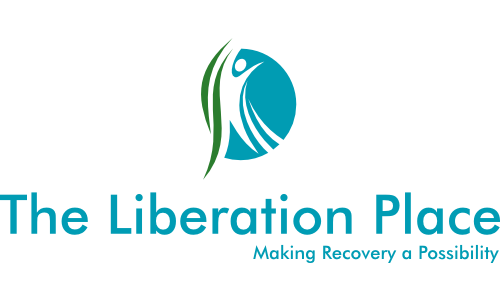Wise Mind Meditation Scripts
Learning how to walk yourself into a Wise Mind state is essential in the grand scheme of things, particularly when it comes to building awareness for the behavioural changes we are trying to make. Wise mind allows us to see things from an objective point of view, rather than the subjective perspective we are rigidly attached to when dominated by our childhood schema. It allows us to disconnect from the parts that are trying to control our behaviour with coping mechanisms designed to avoid the discomfort of an unwanted emotional experience. In essence, when in a state of Wise Mind, we “Walk the Middle Path” between the parts that exist in Emotion mind, those that are dominated by fear, anger, sadness, guilt, shame and loneliness, and the parts that exist in Reason Mind, those that have no empathy and understanding for what it means to be an emotional human being.
“Wise mind allows us to see things from an objective point of view, rather than the subjective perspective we are rigidly attached to when dominated by a childhood schema.”
~Steven Morris RP.
At the bottom of this page, you will find some guided meditations intended to help you access your own personal state of Wise Mind. I also suggest keeping your eyes on the social media platforms and the website for The Liberation Place, as the content there will be constantly updated with meditations and educational material on this and many other subjects regarding DBT, schema therapy, and Mindfulness in general. There are also many other examples of Wise Mind meditations available online, so if what’s on offer here at The Liberation Place is not supporting you in building this ability, take a look at some of the other things that are available to see if you can find an effective practice for you. When you find one that works, use these guided meditations, in whatever form you find preferable, every single day to build your ability to access your state of Wise Mind.
Practice developing your ability to walk yourself into this internal space of peace and harmony at multiple times throughout your day. If you can master this skill, it will only serve to benefit you on your journey of behaviour change. Particularly as we step into understanding the different parts of your personality, and educating them on the way things actually are, rather than the way our stories about the past have influenced the present moment, causing our parts to only see the world from this tainted and filtered perspective. This is the time when we bring the skills of Schema Therapy into the mix of what we are doing. This is intended to develop our ability to use the skills of Emotion Regulation to change the way we view the world from an ineffective point of view, into one that allows us to Live the Life we Want to Live.
“If you can master this skill, it will only serve to benefit you on your journey of behaviour change.”
~Steven Morris RP.
In order to practice our mindfulness skills, we have to put them into a structured daily schedule, as all of the research associated with Dialectical Behaviour Therapy shows, if we don’t do this, it is highly unlikely that we will follow through with actually participating in the practice, and then developing it as a new habitual thing to do. Only when we develop new habits will they actually make a difference to the changes we are trying to make, so take the time to develop a morning, and night routine, in which you incorporate your mindfulness practice. Use the skills of mindful breathing, creating your safe place, and accessing wise mind to begin, and end your day. Over time, this will set you up for success, because remember, we will always achieve what our lifestyle has us set up to achieve. As we talked about before, if time is hard to come by, participating in some of your more mundane daily activities “One Mindfully” can be a way to overcome the issue of a busy and productive lifestyle.
Below are the written versions of the Wise Mind meditations available through the links on this page, as well as the social media platforms of The Liberation Place. Take some time to read through them, rehearse them in your mind, practice, practice, and practice some more, and when you think you’ve practiced enough, practice some more.
Stone Flake on a Lake
Sit in a comfortable but attentive position, and if possible, close your eyes. If not just find a place to rest your gaze that will not distract your attention in any way.
As you sit there, focus your mind on your breath. Attend to your breath coming in, and your breath going out, and as you breathe naturally in and out, imagine you are by a lake on a warm sunny day. It is a large, clear, very blue lake.
The sun is shining warmly on the lake. Imagine that you are a small stone flake from a piece of stone near the lake, and imagine being gently tossed out onto the lake, out to the middle of the lake, skimming onto the cool, clear, blue waters of the lake.
Imagine that you are slowly, very slowly floating down in the lake, noticing all that is in the lake as you gently float down, floating down in the cool, clear blue waters, gazing at what is around you, and now settling on the clear bottom of the lake
Continue to sit at the center of the lake, gazing at the clear waters and what is nearby. And when you are ready, open your eyes, come back to
the room, trying to maintain your awareness of that clear center that is within you.
Walking Down the Inner Spiral Staircase
Sit in a comfortable but attentive position, and if possible, close your eyes. If not just find a place to rest your gaze that will not distract your attention in any way.
As you sit there, focus your mind on your breath. Attend to your breath coming in, and your breath going out, and as you breathe naturally in and out, imagine there is an inner spiral staircase within you.
Imagine that you are walking down the staircase, going at your own pace, making the staircase as light or as dark as you wish, with as many windows as you wish.
Walking slowly down, and as you walk, noticing if you are tired or afraid, sitting down on the steps if you wish, walking down the stairs, as steep or as shallow as you wish, light or dark.
Noticing as you walk down moving toward your very center, toward your own wise mind, toward wisdom, simply walking down at your own pace, stopping, and sitting when you arrive at a still point.
And when you are ready, open your eyes, come back to the room, trying to maintain your awareness of that clear center that is within you.
Asking “Is This Wise Mind?”
Sit in a comfortable but attentive position, and if possible, close your eyes. If not just find a place to rest your gaze that will not distract your attention in any way.
As you sit there, focus your mind on your breath. Attend to your breath coming in, and your breath going out, and as you breathe naturally in and out, bring to mind something you want to do or something you don’t want to do, an opinion you have, or something you are doing right now.
Focus your mind on your breath, notice your breath coming in and your breath going out as you breathe naturally, in and out. As you inhale, ask yourself, “Is this (action) wise mind?”
For Example – “Is eating a second dessert wise mind?” “Is not going to my therapy session wise mind?”
As you exhale, listen (don’t talk, don’t answer) for the answer.
Keep asking with each breath in and listening with each breath out.
See if an answer comes to you. If not, perhaps there is no answer now, or perhaps you are too ambivalent to know the answer.
Download the PDF of this page





